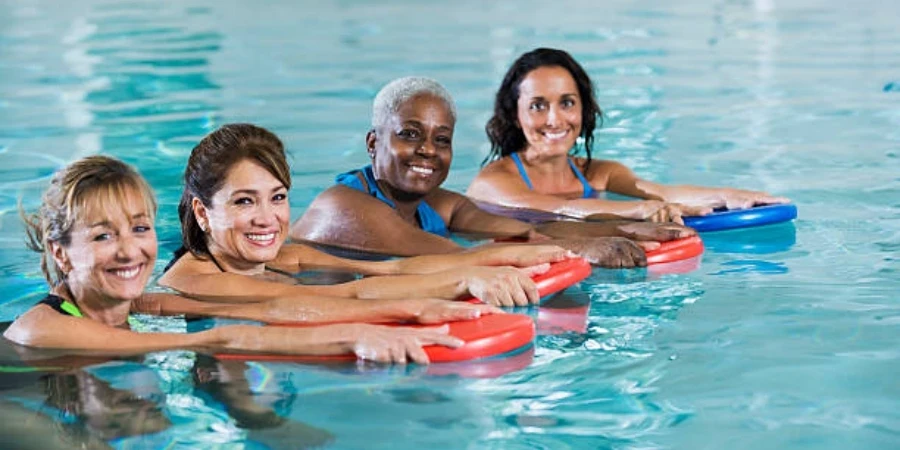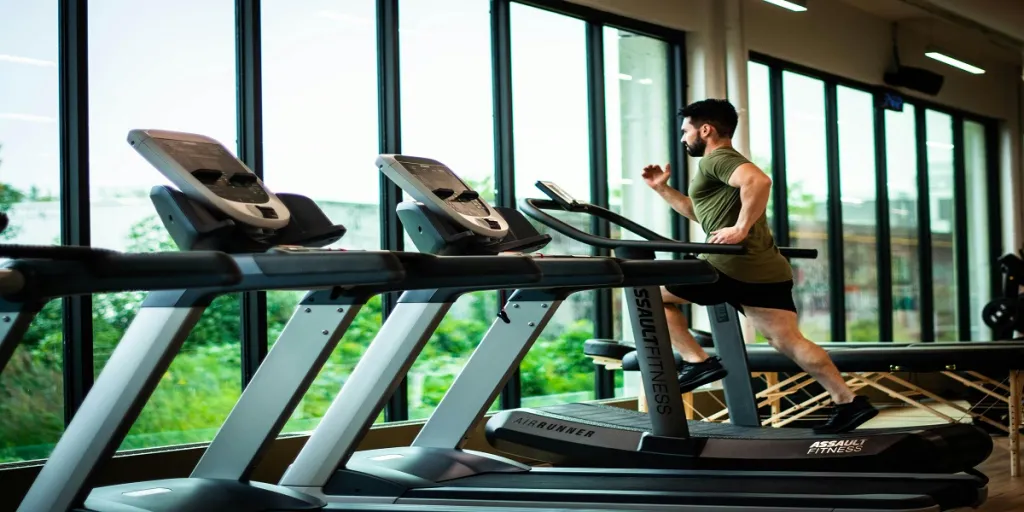Table of Contents
● Introduction
● Understanding kickboard types and their uses
● The 2025 kickboard market: Trends and insights
● Key factors to consider when choosing a kickboard
● Leading kickboard models and their features
● Conclusion
Introduction
Selecting the right kickboard is essential for swimmers of all levels, as it enhances both training efficiency and comfort. These essential tools help swimmers isolate their legs during workouts, allowing for better focus on technique and muscle development. A well-chosen kickboard promotes proper body alignment, supports buoyancy, and reduces strain, ultimately improving performance. Whether for strengthening the legs or refining stroke technique, the right kickboard can make a significant difference in training outcomes, ensuring swimmers get the most out of their workouts.
Understanding kickboard types and their uses
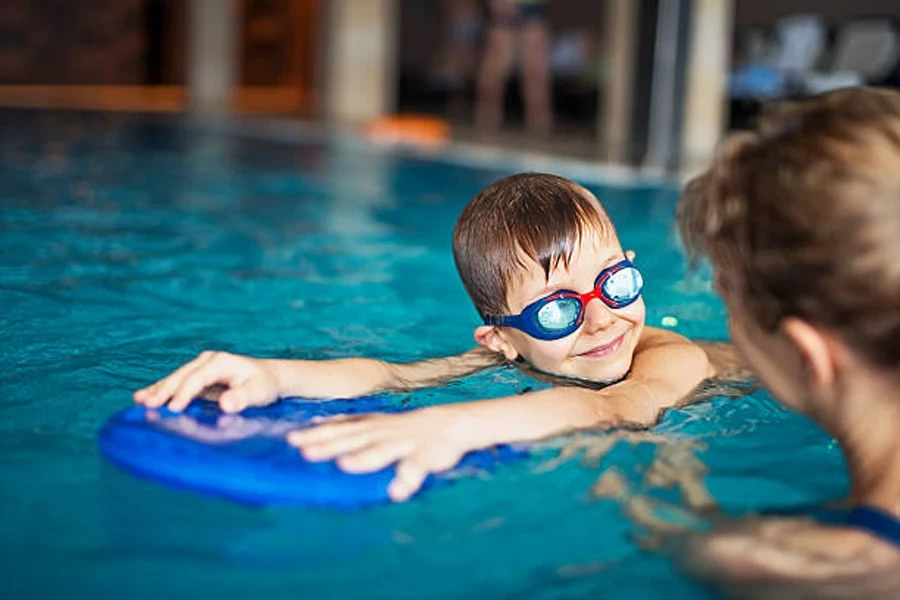
Traditional kickboards
Traditional kickboards are characterized by their classic rectangular design with a slightly rounded front. These are crafted from thick, buoyant foam, making them ideal for isolating leg movement during swimming training. Commonly used for building leg strength and stamina, they offer a straightforward solution for swimmers of all skill levels. However, their high buoyancy can sometimes lead to increased shoulder strain during prolonged use, particularly for those with existing shoulder sensitivities.
Ergonomic kickboards
Designed for comfort and efficiency, ergonomic kickboards typically feature a triangular or contoured shape. They reduce water resistance and alleviate strain on the shoulders, making them a preferred choice for advanced swimmers or those managing shoulder issues. Many ergonomic options include cutout handles, providing flexibility in hand positioning. These features support better body alignment and streamlined kicking, enhancing overall swimming technique.
Dual-function kickboards
Dual-function kickboards combine the utility of a kickboard and pull buoy into a single tool. This innovative design minimizes gear requirements, making them especially convenient for swimmers who travel frequently. These versatile boards can be used for leg isolation or placed between the thighs to aid upper-body workouts. Despite their compact form, they provide adequate buoyancy for varied training needs.
Compact and kid-friendly kickboards
Compact kickboards cater to children and beginner swimmers by offering smaller, lightweight designs that are easy to grip. Their dimensions make them manageable for younger swimmers, helping to build confidence and proper kicking technique. Often adorned with bright colors or playful patterns, these boards encourage engagement in the water while maintaining functional support for learning and training purposes.
The 2025 kickboard market: Trends and insights
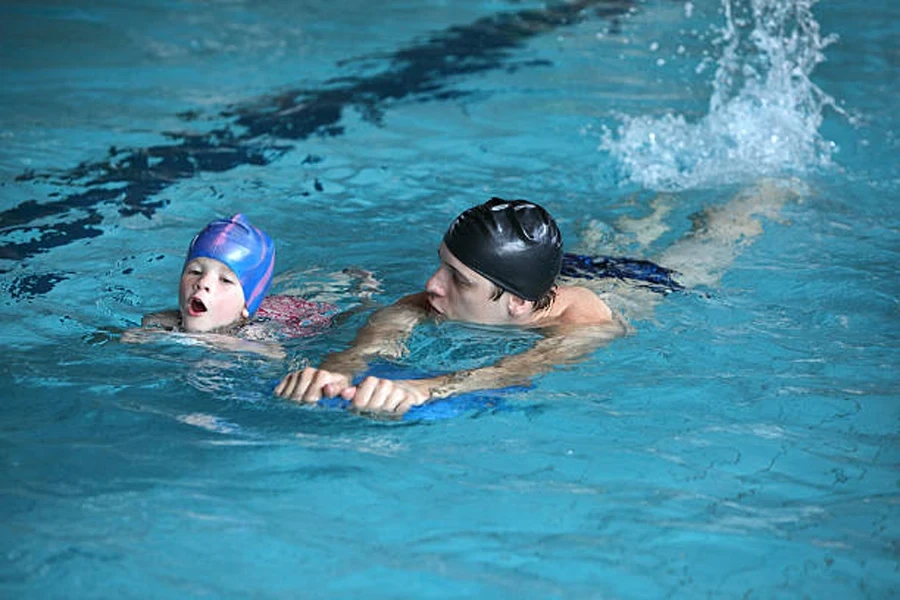
Market growth and popularity
Swimming continues to rise as a preferred fitness activity worldwide, driving a consistent demand for high-quality swimming gear, including kickboards. The global market for swimming training equipment is projected to grow significantly, with factors like increased awareness of water-based fitness and rehabilitation fueling this expansion. Counterpoint Research notes that the broader swim gear market is expected to witness a CAGR of over 6% from 2023 to 2028, reflecting sustained demand. The need for reliable, ergonomic, and versatile products is reshaping the purchasing priorities for swimming accessories.
Material innovations
Modern kickboards benefit from advancements in materials, with EVA foam and durable plastics dominating production. EVA foam offers superior buoyancy, water resistance, and durability, making it a preferred choice for most manufacturers. Durable plastics, often incorporated in compact models, provide enhanced rigidity without adding significant weight. These materials not only improve comfort but also extend product longevity, ensuring that kickboards remain effective under frequent use in chlorinated environments.
Technological advancements
Innovative designs are making kickboards more functional and swimmer-friendly. Features such as ergonomic grips, cutout handles, and lightweight construction are tailored to cater to diverse needs, from beginner swimmers to professionals. Advanced manufacturing techniques also allow for customizable buoyancy and shape, helping swimmers achieve optimal body alignment during training. These advancements highlight a shift toward precision engineering in swim gear, addressing both performance and comfort for a broad spectrum of users.
Key factors to consider when choosing a kickboard

Durability and material
Durability is a critical factor in selecting kickboards, particularly for frequent use in pools with high chlorine levels. Kickboards constructed from EVA foam stand out for their resistance to water absorption and chemical damage. This material not only extends the product’s lifespan but also ensures consistent buoyancy. Alternatively, rigid plastics offer enhanced structural integrity, making them suitable for advanced swimmers who require minimal flex during intensive workouts. Durable materials also contribute to a kickboard’s ability to retain its shape and performance over time, even under heavy usage.
Buoyancy and support
Buoyancy plays a pivotal role in determining how a kickboard supports the swimmer’s posture and technique. Boards with high buoyancy are ideal for beginners and strength training as they help keep the swimmer afloat, reducing effort while focusing on leg movement. Conversely, lower-buoyancy models are designed for technique-driven swimmers, as they provide a closer simulation of natural body positioning in the water. Choosing the right level of buoyancy can enhance training outcomes by targeting specific swimming goals, such as endurance or technical refinement.
Comfort and ergonomics
Comfort significantly influences the usability of a kickboard during long training sessions. Features such as rounded edges, smooth surfaces, and integrated hand grips minimize strain on the swimmer’s hands and arms. Boards designed with ergonomic contours help distribute pressure evenly, reducing the likelihood of discomfort during extended use. Some advanced models incorporate padded or textured areas, offering enhanced grip and support. These thoughtful design elements contribute to a more enjoyable and effective training experience, especially for competitive swimmers.
Size and weight
Selecting the appropriate size and weight of a kickboard depends on the swimmer’s age, skill level, and intended use. Larger kickboards with a broader surface area are suitable for beginners and taller individuals, as they provide greater stability and buoyancy. Smaller, lightweight models cater to children or advanced swimmers, enabling easier handling and better alignment with natural swimming techniques. Weight also matters; a lighter board is more convenient for frequent transport, while a slightly heavier one may offer added stability in water. Matching the board’s dimensions to the user ensures optimal performance and comfort during use.
Leading kickboard models and their features
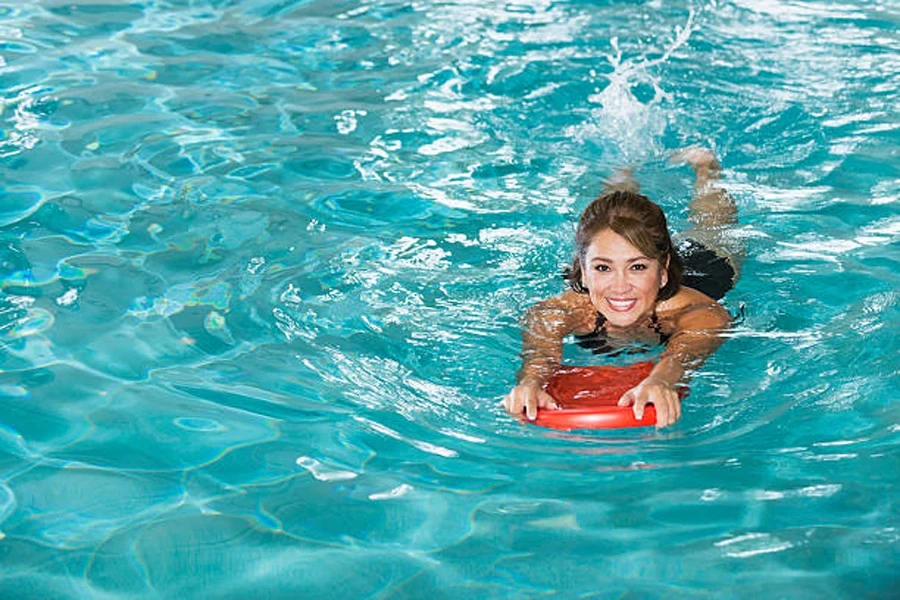
Top overall kickboards for 2025
The best-performing kickboards in 2025 combine high-quality materials with innovative designs to enhance training outcomes. Models made from dense EVA foam provide exceptional durability and buoyancy, making them suitable for swimmers of all levels. These boards often feature ergonomic contours and grip-enhancing elements, reducing hand fatigue during extended sessions. Additionally, their streamlined designs minimize water resistance, improving overall efficiency in training.
Best kickboards for technique and alignment
For swimmers focused on refining technique, kickboards designed to improve alignment and body positioning are essential. These models typically have a compact, triangular shape, allowing for easier submersion and a more natural swimming posture. By encouraging head-down and hips-up positioning, they help swimmers achieve optimal hydrodynamics. Many also include hand straps or textured grips, ensuring stability during technical drills and allowing for advanced training movements like side or one-arm kicking.
Best budget-friendly kickboards
Affordable kickboards in 2025 maintain a balance between cost and quality. These models are often constructed from lightweight foam, providing sufficient buoyancy for general training while remaining accessible to cost-conscious buyers. Despite their lower price point, they include practical features such as rounded edges for comfort and durable materials that withstand frequent use. Their simplicity makes them an excellent choice for beginners and casual swimmers.
Best high-end kickboards for professional use
Premium kickboards cater to competitive swimmers seeking performance-oriented tools. These models prioritize advanced features, including hydrodynamic shapes, reinforced materials for added rigidity, and adjustable hand placements for versatility. High-end options often incorporate designs that allow swimmers to alternate between strength-building and technique-focused drills seamlessly. Their durability ensures consistent performance under rigorous training conditions, making them indispensable for professionals and dedicated athletes.
Conclusion
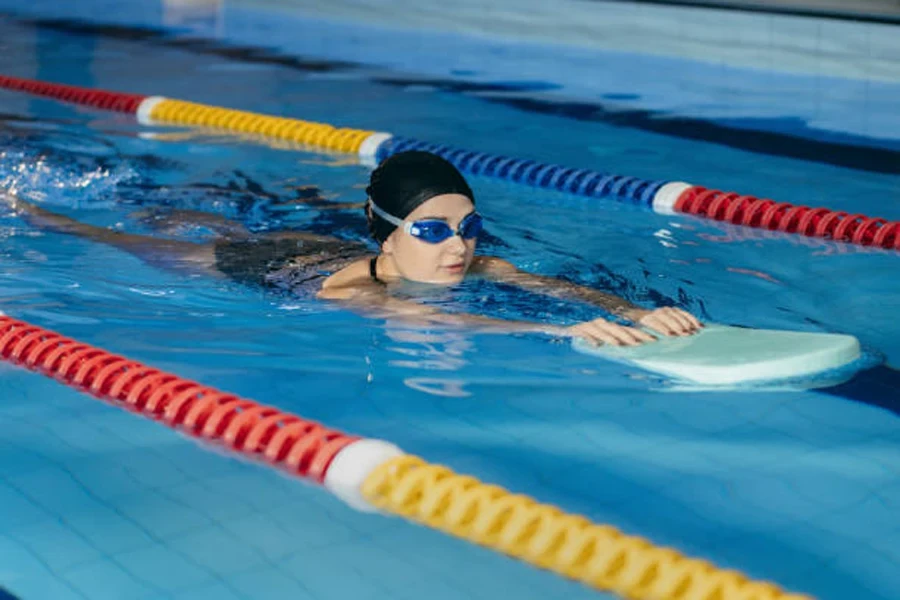
Selecting the right kickboard is crucial for achieving effective swimming training, whether the goal is improving technique, building strength, or enhancing comfort. With a variety of options available in 2025, ranging from durable and ergonomic designs to high-end models tailored for professionals, there is a kickboard for every swimmer’s need. Advances in materials and functionality ensure that each type caters to specific training objectives, making it easier to achieve optimal performance. Investing in the right kickboard ultimately enhances efficiency and supports better results in the water.
